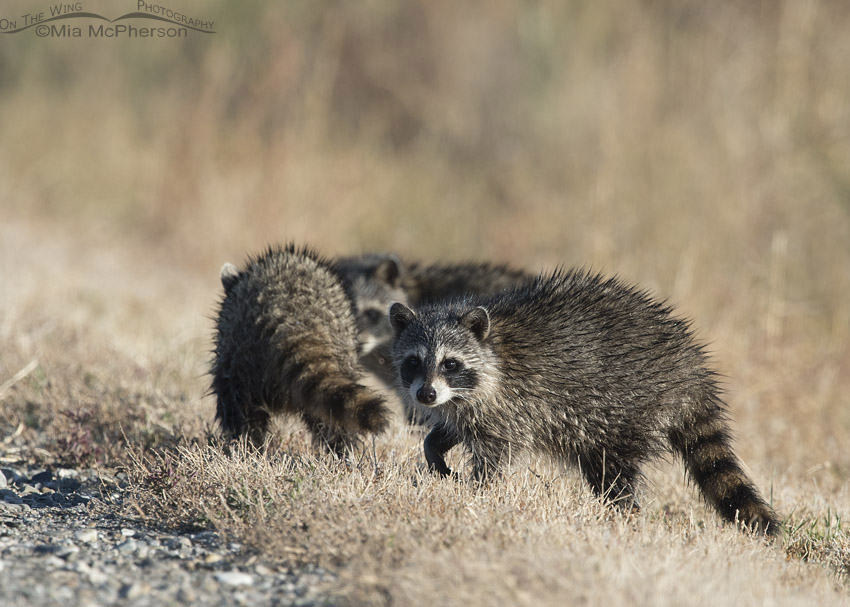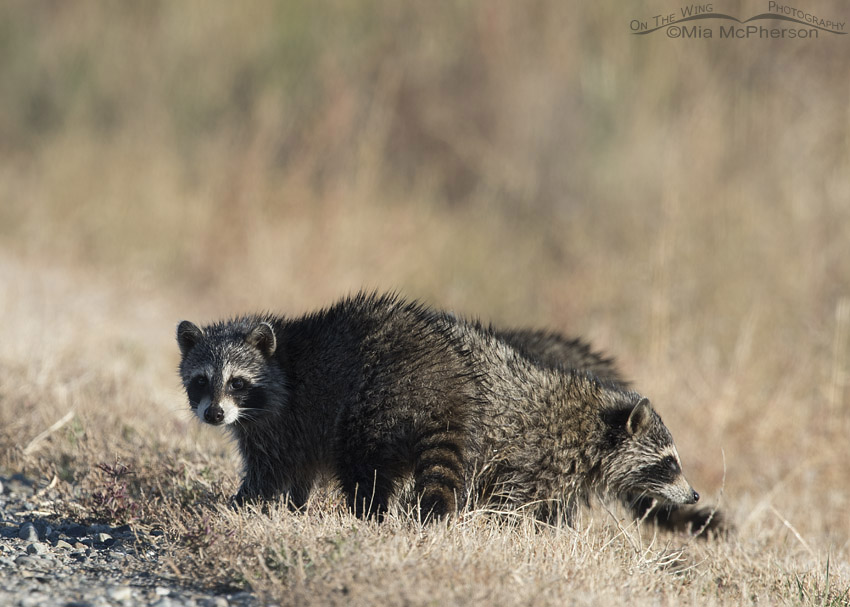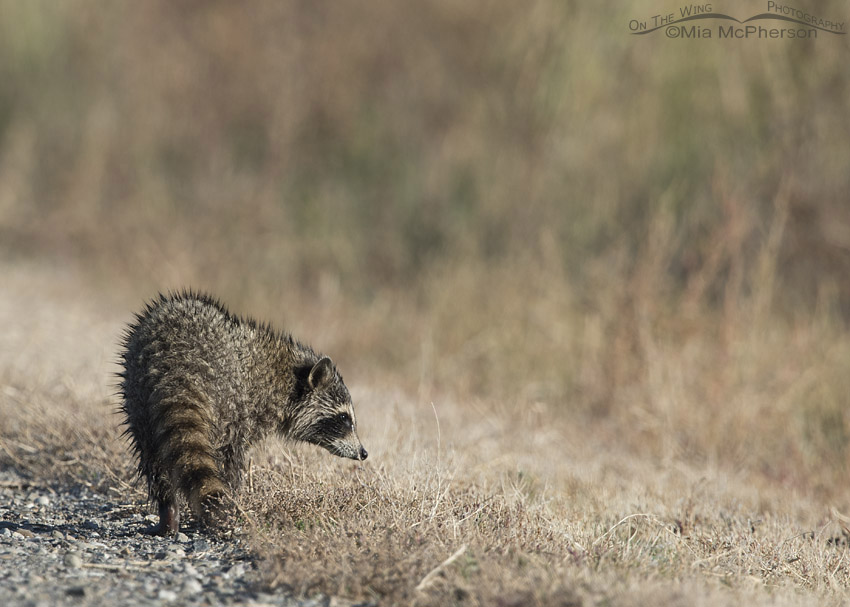Yesterday I found a trio of young Raccoons at Bear River Migratory Bird Refuge and was able to take a series of images of them from inside my Jeep as they cautiously checked me out.
 Trio of Raccoon cubs next to a marsh – Nikon D500, f8, 1/640, ISO 320, -0.3 EV, Nikkor 500mm VR with 1.4x TC, natural light, not baited
Trio of Raccoon cubs next to a marsh – Nikon D500, f8, 1/640, ISO 320, -0.3 EV, Nikkor 500mm VR with 1.4x TC, natural light, not baited
I have seen the young of raccoons called both cubs and kits while doing on line searches and though I am still not sure which terminology is correct I can say that they are cute little critters.
I don’t see raccoons often and have few opportunities to photograph them so I was happy to see them.
 Raccoon cubs at Bear River Migratory Bird Refuge – Nikon D500, f8, 1/640, ISO 320, -0.3 EV, Nikkor 500mm VR with 1.4x TC, natural light, not baited
Raccoon cubs at Bear River Migratory Bird Refuge – Nikon D500, f8, 1/640, ISO 320, -0.3 EV, Nikkor 500mm VR with 1.4x TC, natural light, not baited
Raccoons are not native to the state of Utah but since they adapt well to human presence and are opportunistic in nature they have expanded their range into the Rocky Mountain area and into the Great Basin. There are some online sources that say hunters brought raccoons to Utah but even if that were true it is still highly probable that some have made their way here on their own following human habitation in Utah.
The marshes along the Great Salt Lake provide good habit for the raccoons which includes shelter and an ample food supply.
 Raccoon cub at Bear River Migratory Bird Refuge – Nikon D500, f8, 1/800, ISO 320, -0.3 EV, Nikkor 500mm VR with 1.4x TC, natural light, not baited
Raccoon cub at Bear River Migratory Bird Refuge – Nikon D500, f8, 1/800, ISO 320, -0.3 EV, Nikkor 500mm VR with 1.4x TC, natural light, not baited
This group of three young raccoons were cautious in my presence but I am glad they gave me the opportunity to photograph them. I wasn’t with them long because I felt that they were stressed by my presence and because I had seen them traveling south on the road I felt that me and my Jeep might be preventing them from moving in that direction because I had stopped south of them to get better light. Raccoons may be considered pests by many people in Utah but I don’t and I didn’t want to stress them.
Life is good.
Mia
Click here to see more of my Raccoon photos plus facts and information about this species.


Thank you.
A wonder I will never see.
Yes these masked critters are part of nature but they do cause problems in town.
Since young raccoons generally travel with their mother, that may be what they were looking for. Besides being amazingly intelligent and resourceful, these North American natives are an integral part of our continents natural balance. Thanks for sharing your brief encounter.
Raccoons may be cute, but to me, they just LOOK NAUGHTY!! Damn clever as well. And if possible, they wash their food before eating it – oh WUNNDERFUL! When we grew veggies, they managed to chomp out bites of corn and tomatoes (on the bottom so you don’t see that right off!) – at these plants’ PEAK – just when we were going to pick ’em in the AM!! Never ate one whole cob of corn or tomato – just enough to ruin them! Fie upon you, you cute li’l raccoons! Iowa would like Utah to keep them out there!! Fitting that they like garbage!
More birds, Mia!! Even raptors, as they help to balance populations in nature. I s’pose raccoons “belong” in their own way – I do not like them, Sam I am!
Reminds me of “Marylou”, a resident raccoon we raised. Also reminds me of three young raccoons who were on my bedroom skylight peeriing down at me. When I tried to shoo them off by waving my arms and making noise, they were fascinated and didn’t budge until I stopped…these are pretty wet looking…..
I like raccoons but I worry about their presence in a wetland area with ground nesting birds. They potential are a great threat in nesting areas. They eat both eggs and young in great numbers. There are few natural predators of raccoons in wetland areas.
Beautiful photos of the young raccoons.
Cute little scavengers.